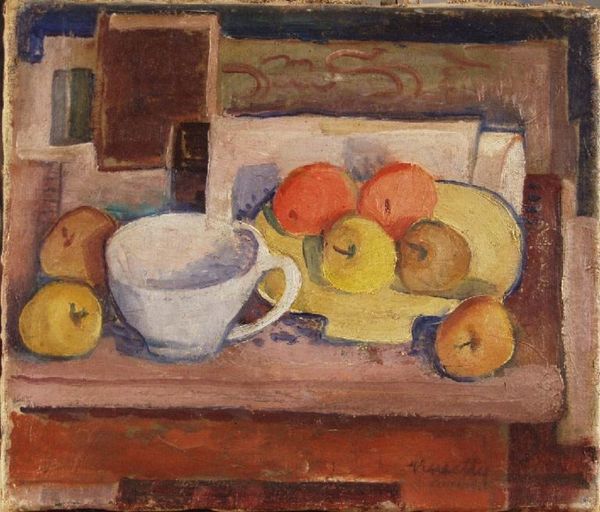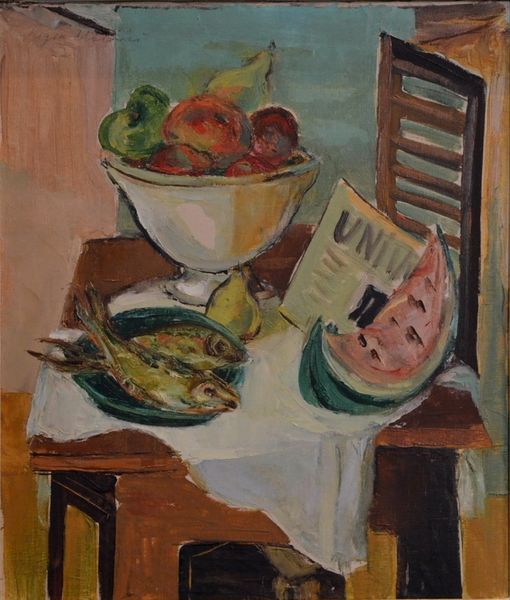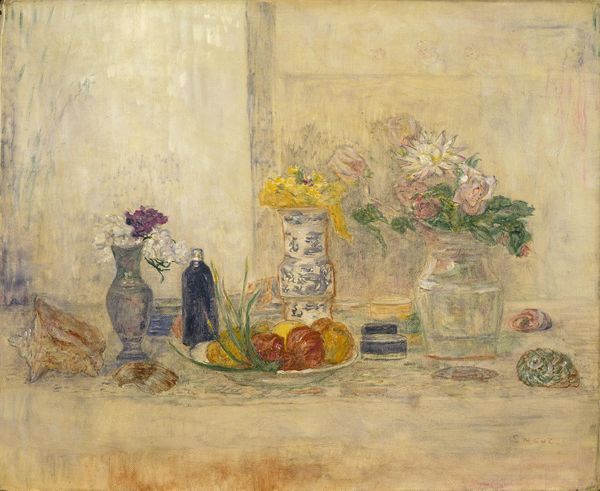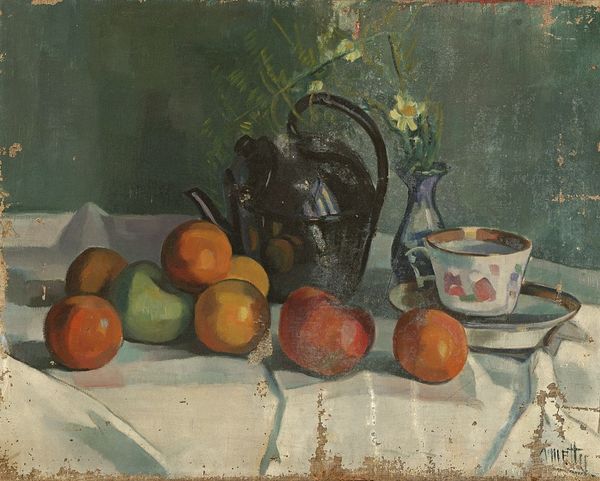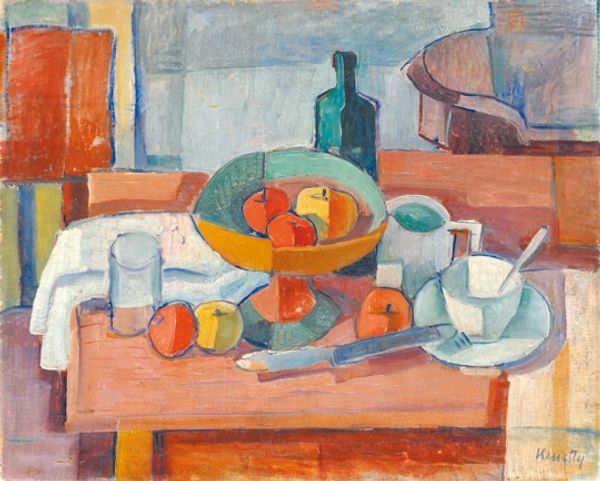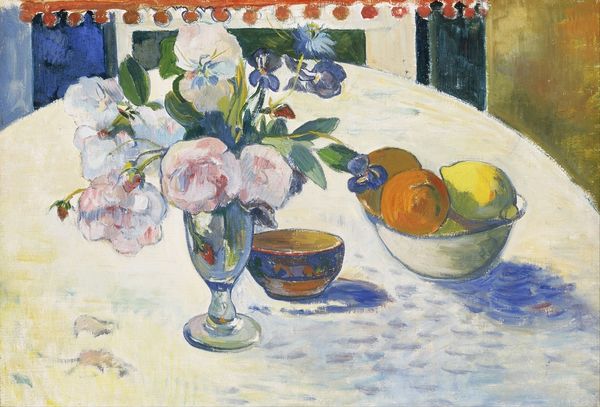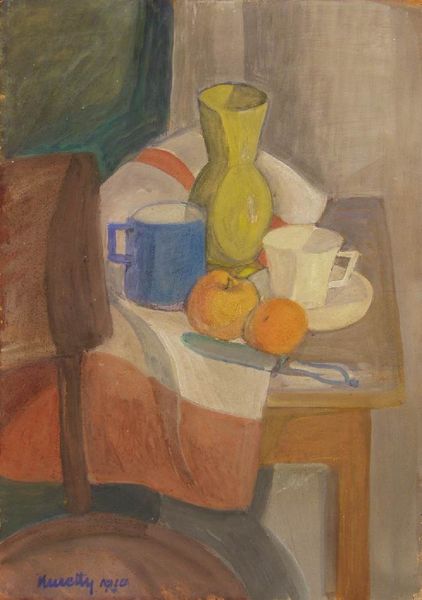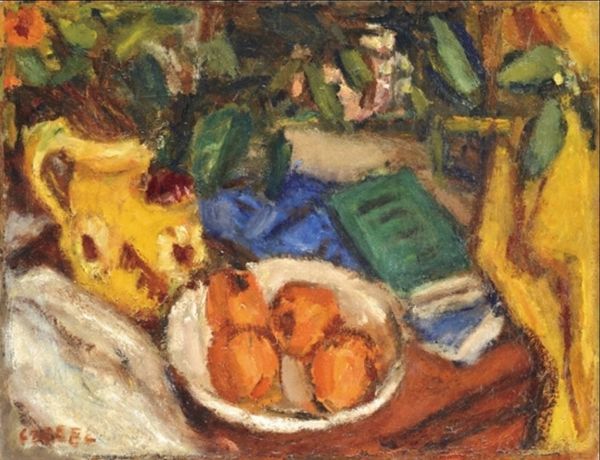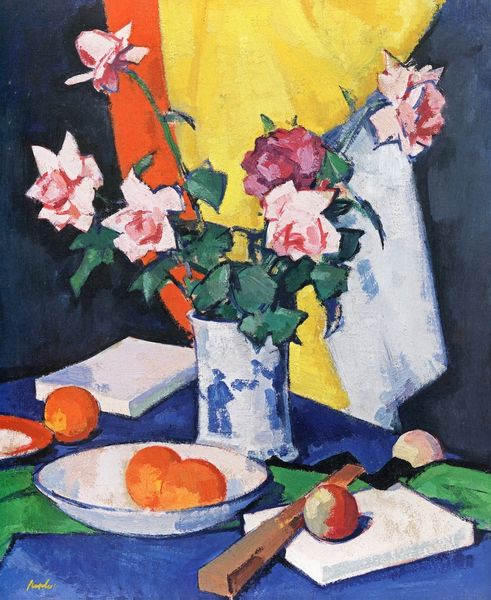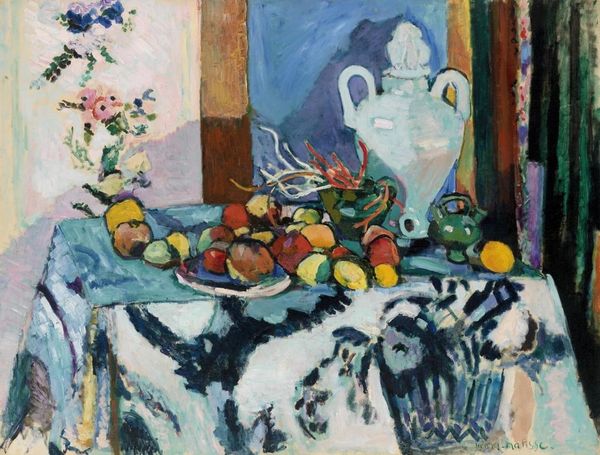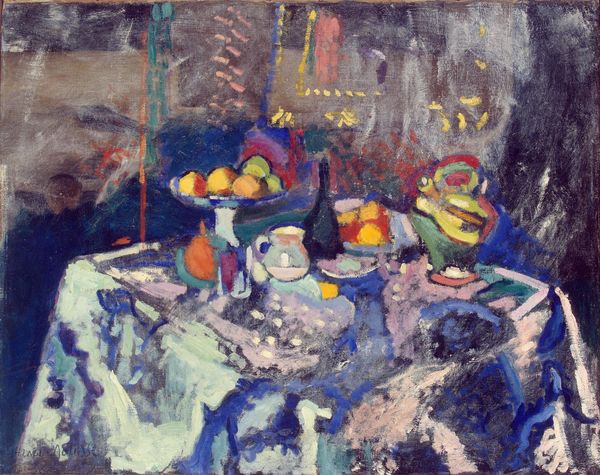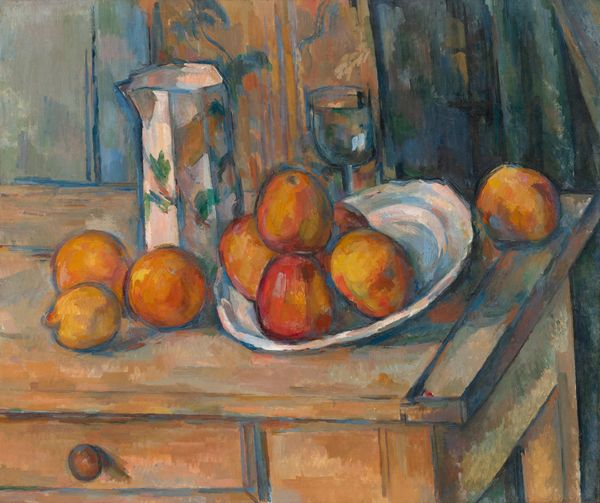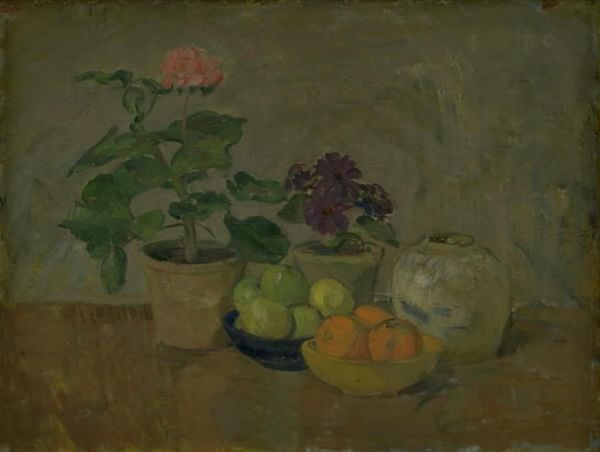
Dimensions: 61 cm (height) x 53.5 cm (width) (Netto)
Curator: Standing before us is "Composition with Hyacinth, Fruits and Blue Bowl," painted in 1911 by Karl Isakson. It is an oil painting showcasing a still life in the Post-Impressionistic style, currently housed here at the SMK. Editor: My immediate impression is a quiet domesticity. It's muted in palette, mostly earth tones except for that striking cobalt blue bowl. There's a tangible calmness about it. Curator: Indeed, it possesses a unique kind of quietness. Isakson's embrace of Post-Impressionism reflects a broader cultural shift away from academic realism, seeking emotional truth and subjective experience. One can imagine this scene representing a particular time and setting, but it resonates due to its symbolic qualities. Editor: The blue hyacinth really draws the eye. The hyacinth, of course, traditionally signifies constancy, regret, or even games and sports in the language of flowers. Here it stands tall amid the humbler, earthly forms of the fruit. Do you think he's contrasting the fleeting with something enduring? Curator: Potentially, yes, though there's much to be discovered. Considering the institutional settings that shaped the art of the era, there was pressure on artists to elevate mundane subject matter through symbolism and form. The very act of composition, arranging these everyday objects, was a deliberate act of creating meaning. Editor: I’m drawn to that little pinkish block sitting just off-center. It seems like a pure geometric form introduced deliberately to contrast all the organic shapes. It evokes, at least for me, a certain kind of intellectual playfulness. It adds to the composition an almost modernist visual symbol—quite apart from all of the cultural meaning inherent in the other objects, like the bowl or fruit. Curator: Interesting, especially given the art world's embrace of abstraction at that time. "Composition" feels less like a still life, then, and more like a constructed statement on aesthetics and symbolism within society, an interpretation informed by the post-Impressionist milieu. Editor: It certainly makes me rethink the relationships between objects we often take for granted, seeing the underlying structures that resonate visually and culturally. Curator: And it reminds us that even still lifes hold the capacity for great conceptual depth when understood through historical context.
Comments
No comments
Be the first to comment and join the conversation on the ultimate creative platform.
